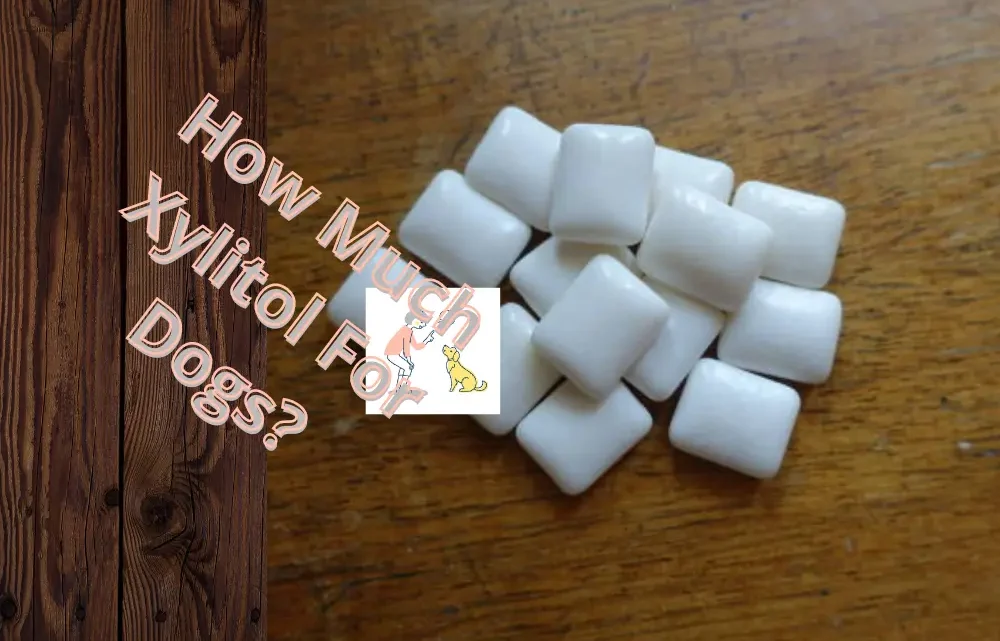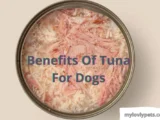
Xylitol for Dogs? How Does Xylitol Affect Dogs?
Xylitol is a sugar alcohol with five carbons and a wide range of applications. We need to be aware that xylitol is present in many common household items that could be within easy access of our canine companions. This increasingly common sugar substitute can be found in a wide variety of foods and supplements, including vitamins and sugar-free gum, and even in many peanut butters.
Xylitol for dogs is very harmful. Dogs shouldn’t consume xylitol. Dogs are susceptible to major health problems from ingesting too much xylitol. Xylitol for dogs can induce hypoglycemia (low blood sugar), seizures, liver failure, and even death in dogs.
What is Xylitol?
Xylitol, pronounced Zy-Li-Tall, is a polyol, or sugar alcohol, a carbohydrate. They are chemicals found naturally in many fruits and vegetables that can be dissolved in water. It is a plant-based sugar alcohol. Since it tastes quite similar to sugar, it is used to replace refined white stuff. The commercial production of Xylitol from birch bark and maize cob allows it to be used as a sugar substitute. Since 1963, the FDA has permitted the use of Xylitol in food.
Because it was originally extracted from birch trees, Xylitol gets its name from the word “xylose,” often known as “wood sugar.” When you drink it, your mouth will feel refreshingly chilly. Therefore, Xylitol is a popular component of sugar-free gum and other oral hygiene products like breath fresheners, mouthwash, and toothpaste.
Xylitol-Containing Foods
This sugar alternative, which has fewer calories than sugar, is frequently used to sweeten sugar-free candies, such as mints and chocolate bars, and sugar-free chewing gum. Other xylitol-containing products include:
mints for the breath
baked items
cough medicine
Chewable vitamins for children and adults
mouthwash \toothpaste
nutritional supplements
certain peanut and nut butter
sweets with no added sugar, such as thin ice cream
Xylitol can also be used in baked goods like cakes, muffins, and pies, commonly to replace sugar in
diabetic products. Home bakers can purchase Xylitol in large quantities to use in their desserts.
Sweetener-containing baked items are also available at shop bakeries.
Some pediatric dentists advocate xylitol-containing chewing gum for youngsters, which could accidentally end up in a dog’s mouth. Keep such products away from your dog.
Why is Xylitol for Dogs Dangerous but Not for Humans?
The secretion of insulin from the pancreas regulates blood sugar levels in humans and dogs. Xylitol does not induce insulin secretion from the pancreas in humans. On the other hand, canines have a different situation: When dogs consume Xylitol, the Xylitol is rapidly absorbed into the bloodstream, potentially resulting in a powerful insulin release from the pancreas.
This quick insulin release may result in a rapid and significant drop in blood sugar levels (hypoglycemia), which can occur within 10 to 60 minutes of consuming the Xylitol. This hypoglycemia can rapidly become life-threatening if left untreated.
Please be aware that Xylitol does not appear to be as harmful to cats and other pets as it is to ferrets. Cats appear to be spared, at least in part, because they dislike sweets. On the other hand, ferret owners should exercise caution, as ferrets, like dogs, have been known to get low blood sugar and seizures after consuming xylitol-containing items.
Xylitol for Dogs Symptoms to Watch Out

Hypoglycemia is the first indication of xylitol poisoning, which can occur within an hour. The following are some of the symptoms of low blood sugar:
Weakness Vomiting
Inability to walk or stand unaided
lack of coordination
a state of weakness or sluggishness
Tremors
Seizures \Coma
After vomiting, your dog may show signs of xylitol poisoning, including lethargy, disorientation, and even seizures due to the abrupt drop in blood sugar that occurs. Extreme cases may cause the dog to have convulsions or liver failure. Hypoglycemia may or may not precede liver failure in xylitol-poisoned dogs.
If you suspect your dog has consumed Xylitol, take him to your veterinarian or an emergency animal hospital immediately. Your dog may require hospitalization for medical supervision since hypoglycemia and other major adverse effects may not manifest for up to 12 to 24 hours.
Is There an Antidote for Xylitol Poisoning?
No. Although intravenous dextrose (glucose) supplementation and liver-protecting medicines can help, xylitol toxicity has no known antidote.
How is Xylitol Poisoning Treated?

If you suspect your dog ate something containing Xylitol, contact your veterinarian or an emergency immediately.
The amount of Xylitol in the gum and other items can vary greatly. Some manufacturers don’t specify how much is in their product, so it’s crucial to notify your veterinarian as soon as possible if he ate something with Xylitol in it.
To properly reverse any harmful effects and prevent the development of serious disorders, prompt and active treatment by your veterinarian is important. The sooner the pet receives treatment, the better its chances of recovery. Veterinarians may induce vomiting to stop the absorption of Xylitol if a dog has just consumed it and is showing no clinical indications.
Assuming clinical symptoms have emerged, care will be tailored to address these symptoms. Your veterinarian will run blood tests to see if your pet needs treatment for low blood glucose or potassium levels caused by Xylitol.
Your dog will need blood glucose monitoring, dextrose administration, intravenous fluids, liver protectants, and other supportive care, all of which can only be provided in a hospital setting. Tests of blood and liver function should be repeated regularly to ensure health.
Your pet’s veterinarian may administer insulin, and intravenous fluids, monitor vital signs and use other treatments to alleviate symptoms.
How do I Ensure the Safety of My Dog?
Learn the constituents: To ensure that the treat you’re giving your dog is safe, check the label for the presence of Xylitol, as it is used as a sugar alternative in some brands. Additionally, Xylitol may be found in products marketed as “reduced sugar,” “diabetic-friendly,” “cavity-free,” or “no sugar added,” so be sure to read labels thoroughly.
The most dangerous products have Xylitol as their first or second ingredient. However, if you suspect your dog has consumed Xylitol, you should contact a veterinarian immediately.
Dogs appear to be the most vulnerable to the toxic effects of Xylitol. No evidence suggests that xylitol consumption causes hypoglycemia or liver failure in cats, rabbits, ferrets, or horses. It is preferable to avoid exposing these other species to Xylitol even though they do not appear to be susceptible to it.
In the event of a poisoning, it is always preferable to decontaminate and treat your dog as soon as possible. It is critical to diagnose and address any health issues quickly.
Xylitol is toxic to dogs, so store all goods containing it safely out of reach. Dogs are smart, so they will figure out how to get to these dangerous things.
Fruits Containing Xylitol for Dogs
Many natural foods, including raspberries, apples, and carrots, contain Xylitol naturally. Dogs and Cats would have to eat many of these snacks before they were sick because the amounts detected in them are so low.
How Much is Xylitol Dangerous for a Dog?
The smallest amount a dog should consume to cause hypoglycemia (low blood sugar) is 0.045 grams. (0.1 grams/kilogram). Ingestion of 0.11 to 0.22 grams per pound can cause liver damage. (0.25-0.5gram/kilogram). This indicates that even one piece of gum can be fatal to a 20-pound dog due to xylitol toxicity.
How Long Does Xylitol Poisoning Take to Affect My Dog?
Since Xylitol is rapidly absorbed, symptoms might appear within 30 minutes or up to 12 hours after ingestion. Vomiting, weakness, stumbling/loss of balance, unusual tiredness, tremors/seizures, collapse and coma are all clinical indications of xylitol poisoning in dogs.
How Can I Know if Xylitol Poisons My Dog?
If you know or think your pet has consumed Xylitol, you should take them to the vet immediately. Xylitol can be found in various meals and common household items, such as baked goods, gum/mint, medicine, oral hygiene products, cosmetics, and more.
If you don’t observe your pet ingesting Xylitol but notice symptoms like vomiting, weakness, problems walking, balance issues, lethargy, seizures, collapse, or a coma-like state, it’s toxic.
What is The Most Common Major Illness Caused by Xylitol Exposure in Dogs?
Dogs can develop hypoglycemia (low blood sugar) and liver failure from Xylitol. Untreated liver disease can kill your dog.
Can Dogs Recover from Xylitol Poisoning?
Xylitol toxicity in dogs usually heals with medical care and attentive monitoring. Keep all foods containing xylitol out of your dog’s reach, as it can cause liver failure, seizures, brain damage, and even death if ingested in large enough quantities.
Can Dogs Eat Peanut Butter?
A small amount of peanut butter can be a healthy treat for your dog, but make sure to read the label first. Only offer your dog peanut butter that has not been sweetened with xylitol. “Sugar-free” on the peanut butter label could mean that it has xylitol instead of sugar.
Is Xylitol and Birch Sugar the Same Thing?
Xylitol is the active ingredient in birch sugar. Birch sugar, birch bark extract, birch sap, and wood sugar are all names for xylitol that may be found in some goods.
Dog owners who don’t recognize this are at risk. Therefore, you should keep your dog away from any items in your home that contain these substances.


